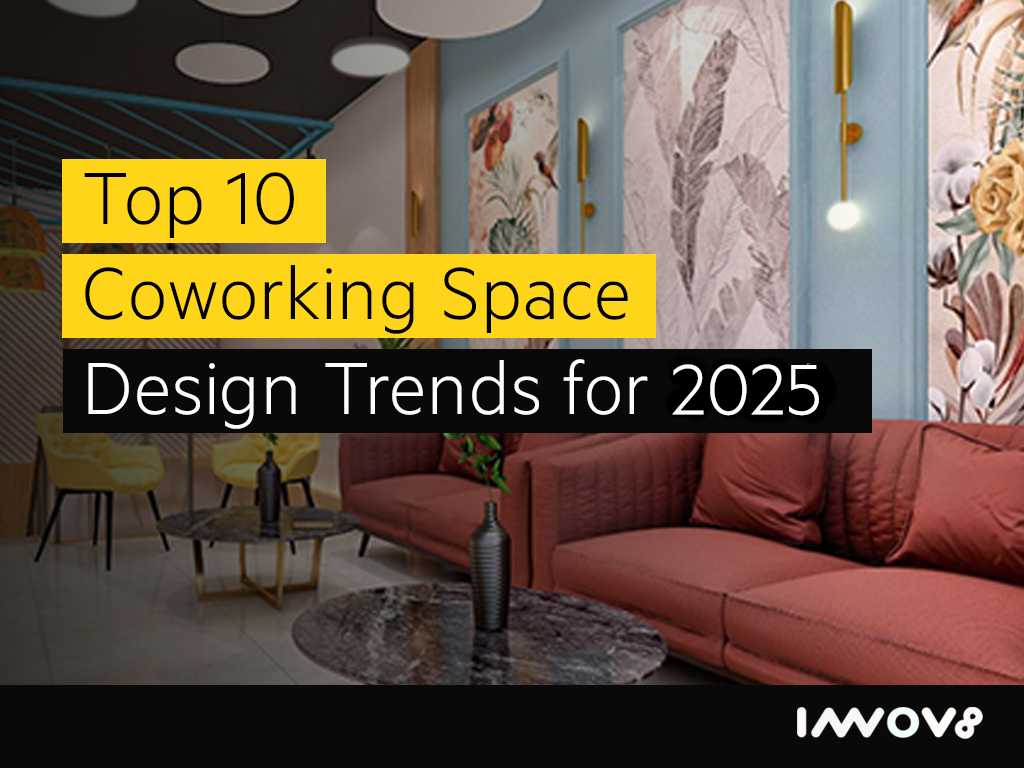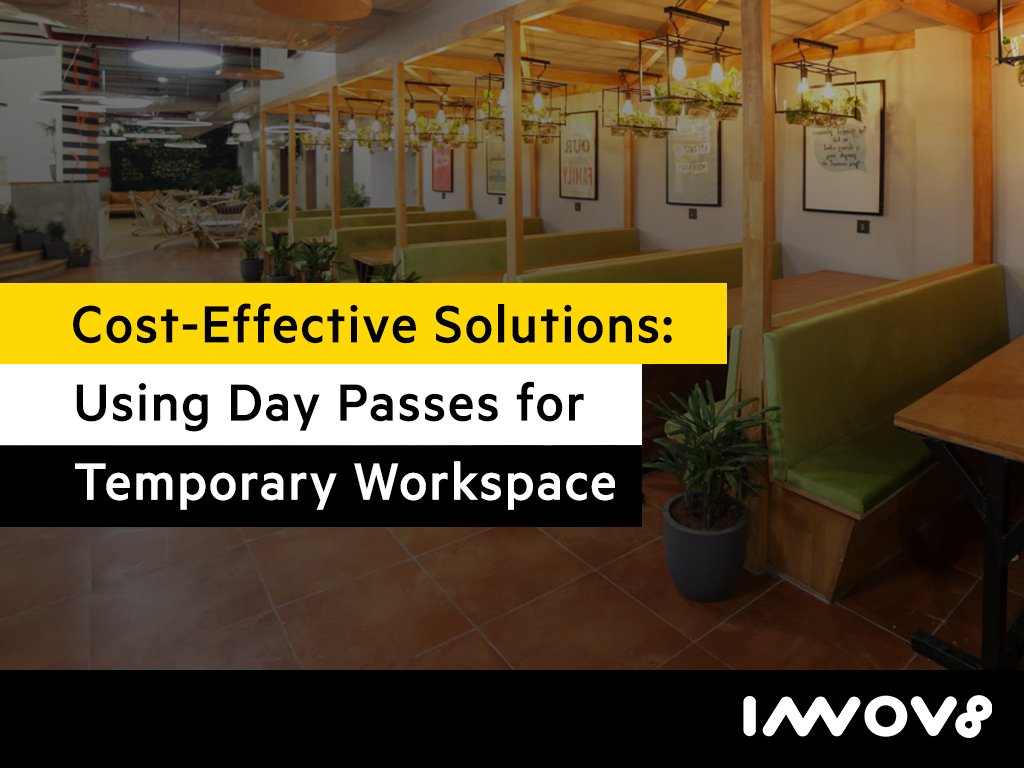Coworking spaces continue to evolve, adapting to the needs of modern professionals and embracing new trends in interior design, functionality, and sustainability. As the demand for flexible work environments grows, coworking spaces are integrating cutting-edge features in both office design and workspace innovation that enhance productivity, well-being, and community engagement.
Here are the top 10 coworking space design trends for 2025 that are shaping the future of workspaces:
-
Biophilic Design
Biophilic design trends in coworking spaces are becoming a defining feature for 2025, focusing on workspace innovation by incorporating natural elements into the environment. Plants, natural light, and organic materials like wood and stone are used to create calming atmospheres that promote well-being and reduce stress. Interior design elements such as indoor gardens, vertical plant walls, and large windows are increasingly popular in coworking spaces to bring the outdoors inside.
This biophilic approach improves air quality and has been shown to boost creativity and productivity. Expect to see more coworking spaces embracing this nature-connected office design, creating a refreshing atmosphere that helps professionals feel more grounded and focused.
-
Modular and Flexible Furniture
As remote work and hybrid models become the norm, coworking spaces are moving toward flexible workspace design for coworking spaces through modular furniture solutions. This trend reflects workspace innovation as it allows spaces to be reconfigured easily to meet members’ needs, whether for private meetings, group collaboration, or solo work. Furniture that can be rearranged—like mobile desks, foldable walls, and movable partitions—is central to creating versatile spaces.
This adaptability in office design ensures coworking spaces can accommodate diverse work styles and that the space remains flexible as teams grow or shift. In 2025, interior design will prioritise multipurpose furniture that transforms the space in minutes, optimising productivity and functionality.
-
Wellness-Focused Spaces
With a growing emphasis on mental and physical well-being, coworking spaces are increasingly incorporating wellness features into their interior design. Wellness zones, meditation rooms, on-site gyms, and yoga studios are becoming standard, representing workspace innovation aimed at helping members maintain a healthy work-life balance.
Additional wellness amenities like nap pods, ergonomic workstations, and standing desks further contribute to member comfort and well-being. In 2025, office design will continue to support physical and mental health, investing in spaces that encourage balance and productivity.
-
Sustainability and Green Initiatives
Sustainable design practices in coworking spaces are at the forefront of office design trends in 2025, focusing on eco-friendly materials, energy efficiency, and waste reduction. Many coworking spaces are adopting sustainable building practices, such as using recycled materials, energy-efficient lighting, and composting programs.
Some spaces even go further with workspace innovation by integrating renewable energy sources like solar panels. This eco-conscious interior design appeals to professionals seeking an environmentally aligned space, reducing the environmental footprint while enhancing workspaces with green architecture.
-
Technology-Integrated Workspaces
As technology transforms workspaces, technology-driven design in coworking spaces is becoming essential to workspace innovation. Smart lighting, temperature control systems, and high-tech conference rooms with video conferencing tools are now standard in office design for coworking environments.
Coworking spaces are likely to incorporate more touchless technology, such as keyless entry and voice-activated systems, offering convenience and hygiene. Additionally, app-based platforms allow members to book meeting rooms or order services, streamlining the interior design experience and making these spaces highly efficient.
-
Community-Centric Layouts
One of the key advantages of coworking spaces is the sense of community they foster. In 2025, office design will place a strong emphasis on layouts that encourage member engagement. Open layouts with communal lounges, shared kitchen areas, and large coworking tables are increasingly popular for workspace innovation that prioritises connections and collaboration.
Many coworking spaces are also designing event-friendly areas for workshops, networking events, and social gatherings, creating interior design that fosters meaningful connections among members. Community-driven design is not only enhancing the physical space but also the relationships among coworkers.
-
Hybrid Workspaces for Remote and In-Office Teams
With hybrid work models becoming standard, coworking spaces are evolving to support both in-office and remote teams. The 2025 design trends include coworking space design for remote workers by incorporating technology and areas that support both collaborative and private work.
Hybrid workspaces are equipped with advanced video conferencing technology, allowing seamless connection between remote and in-office colleagues. This office design approach ensures that hybrid teams have equal access to tools, making workspace innovation essential in enabling flexibility and productivity.
-
Personalized Workspaces
To meet individual preferences, coworking spaces are increasingly offering personalised workspace options in their interior design. Members can customise their environment based on specific needs, from lighting and temperature to desk setups, representing workspace innovation that accommodates unique work styles.
Personalization in office design also extends to privacy options, such as soundproof pods, dedicated offices, or semi-private areas, allowing members to choose their ideal level of privacy and interaction.
-
Art and Design to Inspire Creativity
Aesthetically appealing coworking spaces are a key trend in 2025, with many incorporating unique design elements to inspire creativity. Bold colours, creative lighting solutions, and modern furniture designs are common interior design choices used to stimulate innovation among members.
Featuring local artwork and cultural pieces is also part of workspace innovation, adding a personal touch and creating a visually stimulating atmosphere that encourages creative thinking. This attention to office design helps to foster an environment where creativity thrives.
-
Focus on Acoustics and Soundproofing
Noise distractions can hinder productivity in open office environments. To counter this, coworking spaces in 2025 are improving soundproofing in meeting rooms, phone booths, and private areas as a crucial element of interior design.
Acoustic design elements such as sound-absorbing panels, carpets, and ceiling treatments are being incorporated to minimise noise in communal spaces. This aspect of office design ensures that coworking spaces offer a quieter, more controlled environment, enhancing workspace innovation by providing members with the calm they need to stay focused.
Conclusion
The coworking space design trends for 2025 reflect the evolving needs of today’s workforce, with a strong emphasis on flexibility, community, and well-being. From biophilic design trends in coworking spaces and modular furniture to technology-driven design in coworking spaces and sustainability, these trends represent workspace innovation that is making coworking environments more adaptable, comfortable, and inspiring for professionals.
As coworking spaces continue to embrace new interior design elements, they remain integral to the modern work landscape, offering a flexible, collaborative, and productive environment. Whether you’re a freelancer, startup, or part of a larger team, these office design trends ensure that coworking spaces provide the perfect balance of work and well-being in 2025 and beyond.


